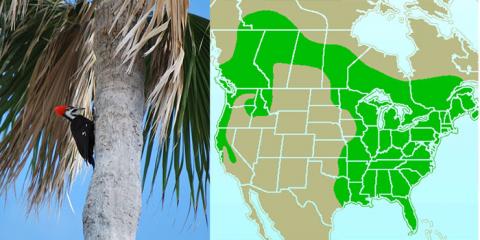Pileated in a palm?
July 02, 2013
One of my favorite animals is the pileated woodpecker. What’s not to like about the noisy bird with the zebra-striped head and neck, long bill and distinctive red crest?
The pileated is Oregon’s largest woodpecker, but it’s relatively shy and not commonly seen. So any day I’m walking in a stand of oak or in a Douglas-fir forest and I see a pileated woodpecker, it’s a good day.
Recently, I was vacationing on Sanibel Island in Florida. This barrier island has a subtropical climate and white sand beaches. It’s nothing like the Douglas-fir forests of Oregon.
So imagine my surprise when I heard a familiar sound, looked into a palm tree and saw two pileated woodpeckers. What were they doing in a palm tree?
Well, pretty much the same thing they do in a Douglas-fir tree: making powerful strikes with their heavy bills, pulling with their feet to increase the strength of the blow and excavating long oval holes (up to several feet long) in the tree trunk in search of insects, or to make a nest.
It turns out I shouldn’t have been surprised to see them. Looking in a field guide I found that pileated woodpeckers live in mature deciduous or mixed deciduous-coniferous woodlands of nearly every type, from tall western hemlock stands of the Northwest, in a broad swath across Canada, to beech and maple forests in New England and down to the cypress swamps of the Southeast.
I had just assumed this beautiful bird was “ours.”I guess we have to share it.
You can learn more about pileated woodpeckers and how to create habitat to attract them in OFRI’s publication “Wildlife in Managed Forests.” Find it on our Resources page.
Norie Dimeo-Ediger
Director of K-12 Education Programs
